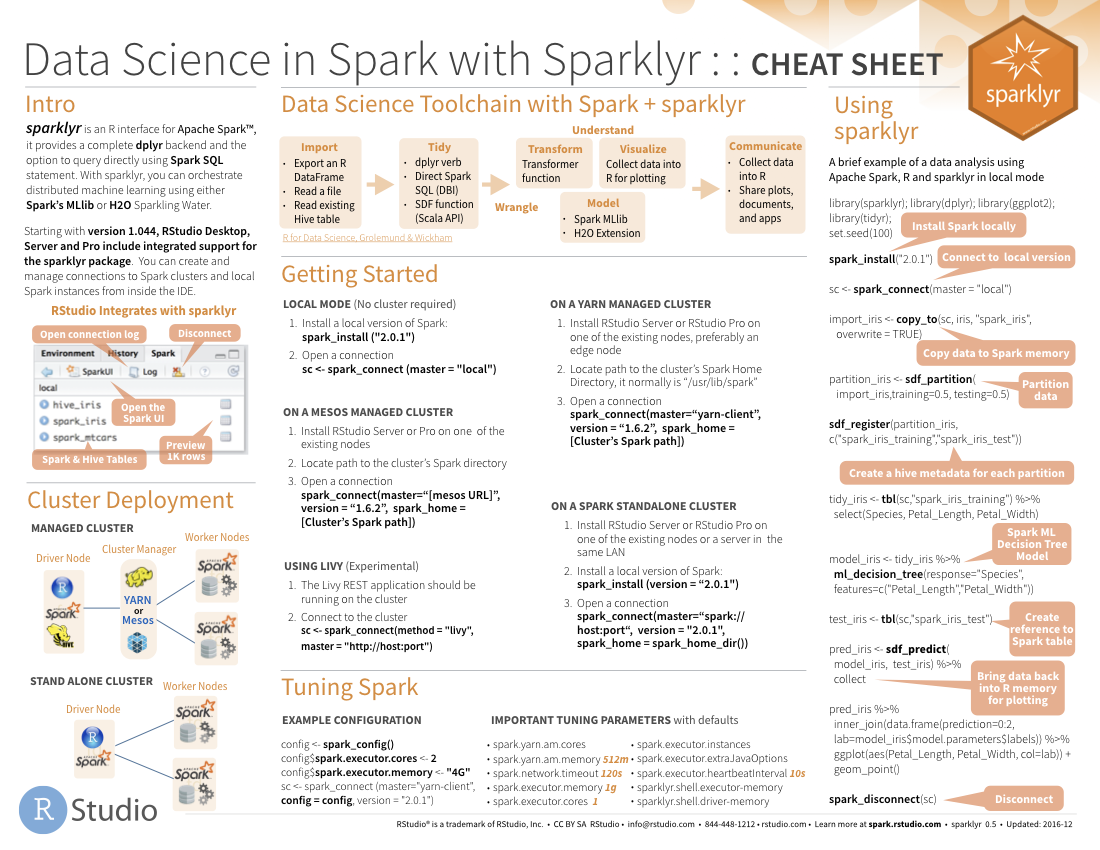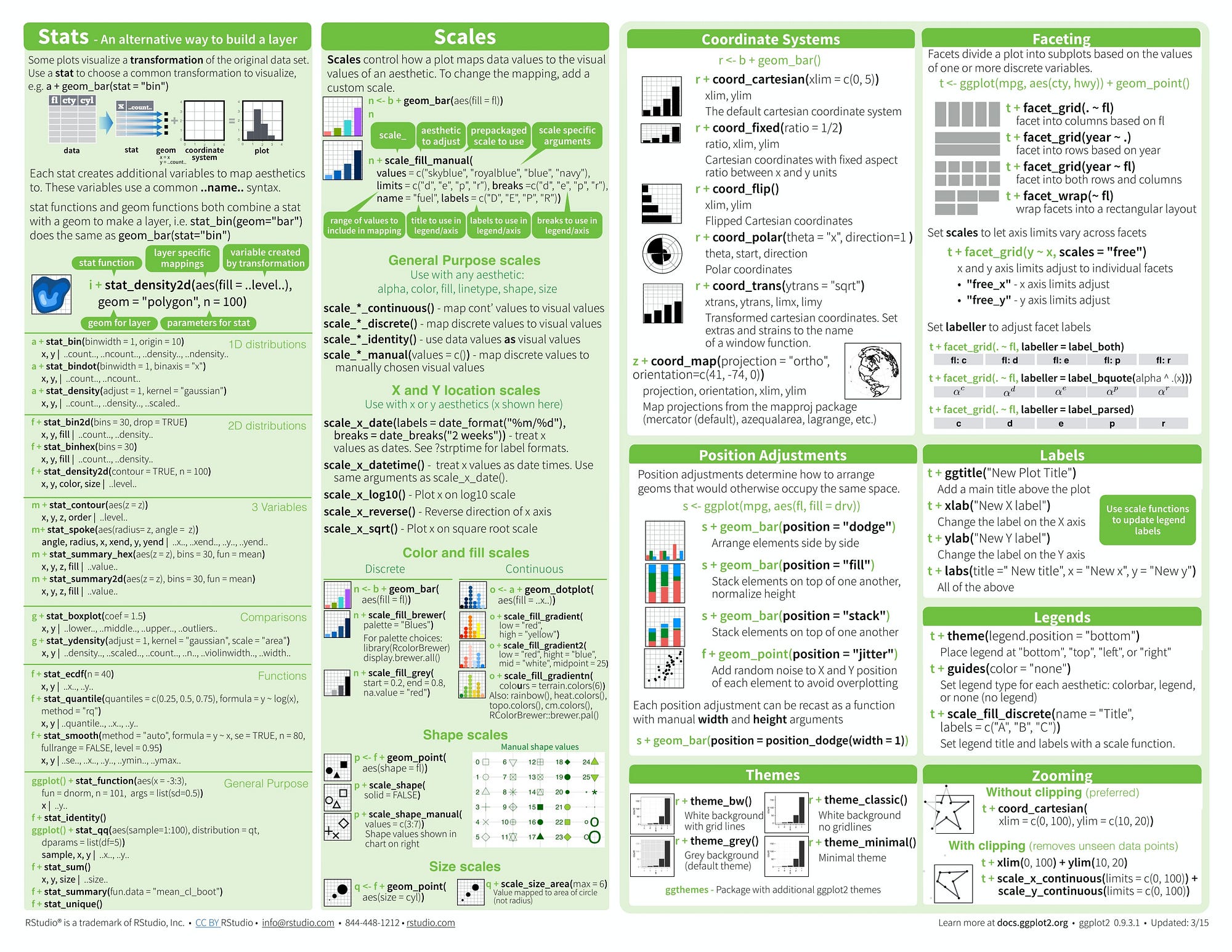- Rstudio Ggplot Cheat Sheet
- Rstudio Ggplot Cheat Sheet 2018
- R-studio Cheats
- Rstudio Ggplot Cheat Sheet 2020
Data Visualization with ggplot2:: CHEAT SHEET ggplot2 is based on the grammar of graphics, the idea that you can build every graph from the same components: a data set, a coordinate system, and geoms—visual marks that represent data points. Today’s take home messages: (1) ggplot2 is the way to go for graphics (2) ggplot2 is a little intimidating, but there’s lots of support from R Graphic Gallery and the RStudio cheat sheet (3) I really love well visualized data! Vmware fusion for mac yosemite free download. Join and Split strc(., sep = ', collapse = NULL) Join multiple strings into a single string. Strc(letters, LETTERS) strc(., sep = ', collapse = NULL.

Rstudio Ggplot Cheat Sheet
I reproduce some of the plots from Rstudio’s ggplot2 cheat sheet using Base R graphics. I didn’t try to pretty up these plots, but you should.
Download adobe flash cs6 for mac. I use this dataset
The main functions that I generally use for plotting are
- Plotting Functions
plot: Makes scatterplots, line plots, among other plots.lines: Adds lines to an already-made plot.par: Change plotting options.hist: Makes a histogram.boxplot: Makes a boxplot.text: Adds text to an already-made plot.legend: Adds a legend to an already-made plot.mosaicplot: Makes a mosaic plot.barplot: Makes a bar plot.jitter: Adds a small value to data (so points don’t overlap on a plot).rug: Adds a rugplot to an already-made plot.polygon: Adds a shape to an already-made plot.points: Adds a scatterplot to an already-made plot.mtext: Adds text on the edges of an already-made plot.
- Sometimes needed to transform data (or make new data) to make appropriate plots:
table: Builds frequency and two-way tables.density: Calculates the density.loess: Calculates a smooth line.predict: Predicts new values based on a model.
All of the plotting functions have arguments that control the way the plot looks. You should read about these arguments. In particular, read carefully the help page ?plot.default. Useful ones are:
main: This controls the title.xlab,ylab: These control the x and y axis labels.col: This will control the color of the lines/points/areas.cex: This will control the size of points.pch: The type of point (circle, dot, triangle, etc…)lwd: Line width.lty: Line type (solid, dashed, dotted, etc…).

Discrete

Barplot
Different type of bar plot
Rstudio Ggplot Cheat Sheet 2018
Continuous X, Continuous Y
Scatterplot
Jitter points to account for overlaying points.
Add a rug plot
Add a Loess Smoother
R-studio Cheats
Loess smoother with upper and lower 95% confidence bands
Loess smoother with upper and lower 95% confidence bands and that fancy shading from ggplot2.
Add text to a plot
Discrete X, Discrete Y
Mosaic Plot
Color code a scatterplot by a categorical variable and add a legend.
par sets the graphics options, where mfrow is the parameter controling the facets.
The first line sets the new options and saves the old options in the list old_options. The last line reinstates the old options.

Rstudio Ggplot Cheat Sheet 2020
This R Markdown site was created with workflowr
